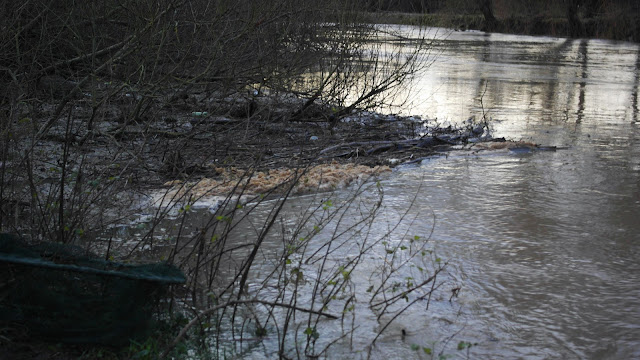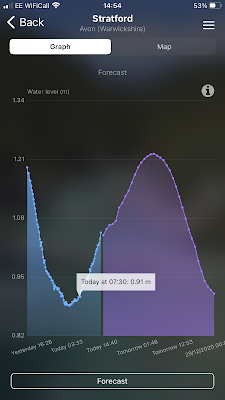There is something about a stretch of turbulent water that attracts spectators, but though many will stand and stare, not so many will think of fishing where the water is really rushing along. Perhaps they think it unfishable, perhaps they think it would not be worth fishing anyway, very often they would be wrong on both counts.
Except for artificial sluices and the like, it is rare to find a water so uniformly fast that there are no fish in it, there are always irregularities, large or small, on the bed or in the bank of the river, which deflect the main force of the current and create sheltered lies.
Sometimes, of course, there are very obvious likely spots where an obstruction of some size, and the division of the current above and below it, are visible at the surface, sometimes one can deduce the presence of irregularities in the shape of the bed by noting the pattern of the surface flow.
The less turbulent areas can hold a surprising number of fish, and there are almost always lots of lies which hold a fish or two, behind boulders, bits of weed, sunken branches, and so on.
If the shelter was not there, there would be no fish. They are not given to roaming about such water in search of their food, continually battling against current. They prefer to wait for something to come to them. They may sometimes move up-current to intercept something, but they will not move far across the current.
his is not the type of water for any who seek restful contemplation, it means hard and continuous fishing. A stationary ledger, unless it brings an immediate response, is not very likely to bring a bite at all, for a matter of 6 ins. one way or the other can mean that the bait is anchored in water which never holds fish.
On the other hand, a ledger rig which is accurately weighted to suit the current will roll in the under-water eddies, very often to rest of its own accord where the pressure of current is reduced the very places where fish will most likely be.
In some conditions there can be a heavy but varying drag on the line, this causes excessive bowing, makes bite detection very difficult and drags the bait about the water too quickly. I find it best to fish, as nearly as possible, upstream, holding the rod high to reduce the amount of line in the water. This means that fast water can be fished without using a forbiddingly heavy lead.
Such places can, in fact, sometimes be fished perfectly well with no lead at all. One simply has to find out by trial and error what is really necessary, bearing in mind that to vary the length or direction of the cast by a couple or three feet or so so may call for a drastic adjustment to the weighting of the tackle.
In turbulent water the bites are liable to vary from a tiny pluck to a rod-bending heave, and there'll be slack-line bites too. The only safe course is to strike at anything which resembles a bite. This way you will inevitably strike at the knocks of weed and debris but you will also strike the real bites, as well.
To attempt to differentiate between the two is to miss a lot of bites, unless you are much better at it than I am. In general the larger baits are to be preferred, even if on other parts of the water small baits are generally used. Perhaps the speed of the water and the short time the bait is in view has something to do with this.
There is very little water which is altogether too fast for fish, and if there are fish present there is a way of getting them out. It is rarely easy fishing, it may demand a drastic revision of tackle and methods, but it is undoubtedly fascinating, always challenging, and sometimes very rewarding. And who can ask for more than that?
A Barbel would be nice wouldn't it !!!!
I caught the river just right, it had been in the fields for a good 48 hours but then it had dropped like a stone and after the rain yesterday, was going to in flood again. Here despite the turbulence of the water you can fish a small lead just off the crease a few rod lengths out with a satisfying donk in a rather large slack that seemingly changes every time you look at is.
I had the stretch to myself as expected because this was about the only fishable swim. To the left there is a good load of overhead cover however with the water temperature barely above 6 degrees (2.5 degrees lower than the last time I fished this swim 4 days earlier,) were any fish up for a feed ?. I positioned a stick where the river lapped up over the bank and when I left 3 hours later it had risen 6 inches.
Anyway 40 minutes in without a bite on meat, a couple of lobworms dug up provided the changed that was required and after ten minutes the stationary rod top springs in to life a fish is on. I thought it was a decent Chub at first especially as it tried to get under some cover, but then after kicking up a gear it was a welcome Barbel. One fish, one bite and that was my lot.
Still nice to be out though and if I left it a few hours later to go bankside the river would have looked entirely different again. Just goes to show the small margins of success in these conditions, especially when the fish feed in small windows too.








0 comments:
Post a Comment